Synaptics Wants To Reinvent Touch Interfaces
Synaptics ThinTouch and ClearPad
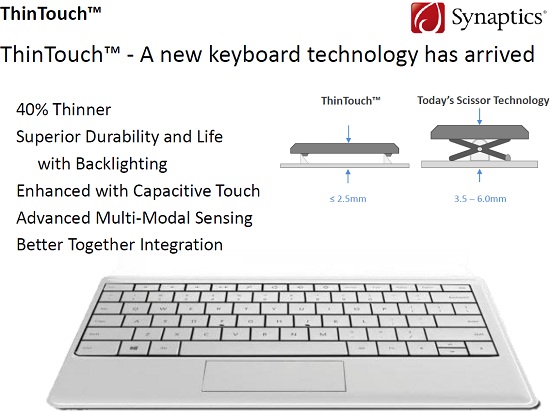
Synaptics also introduced a new keyboard technology that was designed for ultrabooks and thin notebooks. Synaptics calls the new technology ThinTouch and for good reason. A typical notebook uses keys that are 3.5-6.0mm thick and the ThinTouch kets are just the downpress of the keys has been reduced down to 2.5mm. This is a 40% reduction in thickness, which means you can have thinner designs or larger batteries! Not only that, but the entire keyboard surface is equipped with a capacitive touch sensor. This means that you can possibly do gestures on keyboards as well as the trackpad. One of the popular trends right now for high-end notebooks and ultrabooks is to use backlighted keys. Synaptics says the backlighting will look better with ThinTouch because the keys will be closer to the lighting system being used. Since the keys are each capacitive touch it means there is an electronic field over the entire surface. This means that you can even do near-field gestures over the keyboard!
The video above was made by Synaptics to show off their new ThinTouch design. Synaptics hopes to have working laptops with ThinTouch for CES 2013 and then be on retail notebooks that are shipping later in the year.
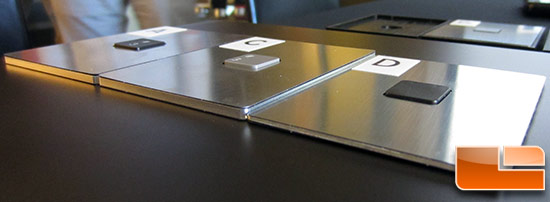
We were shown and allowed to try out several individual keys and felt a slight difference between the ThinTouch keyset and some standard versions that are available on shipping laptops today. In the image above the key labeled D is the Synaptics ThinTouch key and notice how much thinner the metal frame and the actual button are! Again, this will reduce the thickness of devices and we are all for that!
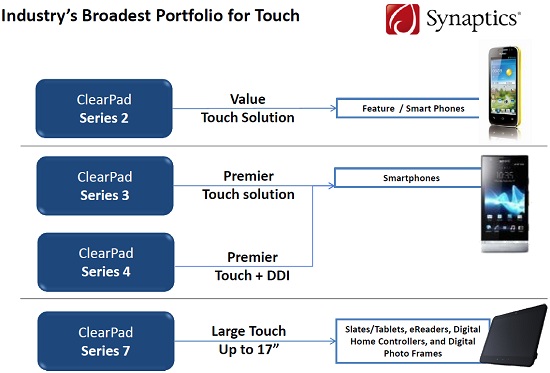
The final touch solution that we were shown was the Synaptics ClearPad, which are touchscreen solutions for Smartphones, tablets and notebooks. Synaptics ClearPad solutions are available on products that need up to a 17″ display! Synaptics is currently integrating the display controller and touch controller into a single chip. Synaptics says that this integration results in much lower cost, power consumption and latency response to touch inputs.
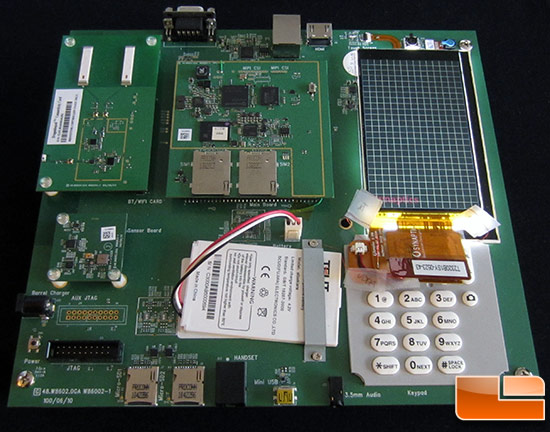
We were able to try out the Synaptics ClearPad 4 using the above Qualcomm development platform.
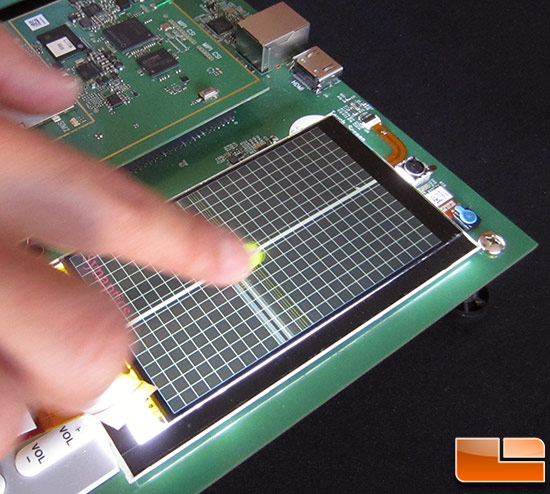
From the tests we were shown the single chip solution used with the ClearPad Series 4 and we did notice reduced latency from two chip solutions that we are used to.
It is really hard hard to understand what we are explaining, so we shot a video of the ClearPad demo while it was being shown to us and you can watch it above. In the video you’ll see Synaptics use an App called Touch Explorer. This app is free to use on Android devices, but you must have 3rd party app installations allowed on your smartphone or tablet. Synaptics does not have an app for Apple iOS devices. We tried to install it on some older phones like the Motorola Atrix and it wouldn’t work, so it’s not a perfect app by any means, but it works on most Android devices.
In the video above you’ll see that Synaptics is using the HTC One X with the ClearPad 3202 touch controller versus the Motorola Droid RAZR with an Atmel touch controller. There is a pretty big difference between the displays! You’ll also see how a cheap AC charger (off the shelf AT&T replacement charger) can wreak havok on a smartphone that doesn’t do a good job of filtering out noise.
Final Thoughts & Conclusions:
Synaptics has some really impressive technologies coming out in 2013 and we were impressed by what we saw. We have been reviewing computer hardware components since 2002 and we have never seen this many human-computer interface changes taking place all at once. Synaptics hopes to change the way we interact with computers and after using the ForcePad, ThinTouch and ClearPad for an afternoon it is clear to us that they will.
All of the devices that we were shown are much thinner than the solutions on the market today, which will be huge with Ultrabook and laptop designers. You also have to remember Microsoft Windows 8 is coming out soon, which is a “Touch First” operating system. It appears that Synaptics clearly understands the market and are bringing out the right products at the time when the industry needs them! We were excited by these products, but what do our peers think? We reached out to Patrick Moorhead, analyst at Moor Insights & Strategy in Austin Texas, to see what he thinks about them.
I think ThinTouch and ForcePad are breakthrough products in that they enable changes to the fundamental PC interaction model that hasn’t had much innovation. ForcePad essentially adds a third dimension to the touchpad and removes all mechanical parts, enabling new usage models and thinner designs. ThinTouch not only reduces the keyboard height, but because it is capacitive, can also be used to do near-field are touch gestures and enables a better lighting solution. PC makers need to pay attention to these or run the risk of getting lapped again by Apple on PC human computer interfaces. – Patrick Moorhead (Moor Insights & Strategy)
As you can see we are not the only ones that are excited with what Synaptics is doing and others feel that these are indeed breakthrough products! We will be sure to visit Synaptics at CES 2013 and we can’t wait to try out all of these impressive solutions on one device!

Comments are closed.